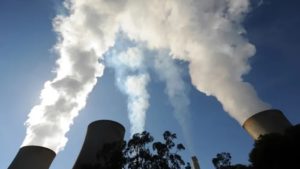Kategori : ENERGY AGENDA NEWS, ENERGY EFFICIENCY NEWS - Tarih : 06 January 2019
Since climate change began to gain political traction in 1990, very little has been achieved. The concentration of carbon in the atmosphere has kept going up.
Lots of money has been spent, vested interests have profited, but the reality is that we remain well on course for exceeding 2C warming. Levels of carbon dioxide in the atmosphere have already breached 400 parts per million and we are on our way to 500.
 What was agreed at Paris three years ago will not get us anywhere near to the target of limiting man-made temperature increases to 2C, let alone the new 1.5C target.
What was agreed at Paris three years ago will not get us anywhere near to the target of limiting man-made temperature increases to 2C, let alone the new 1.5C target.
The latest report from the UN’s Intergovernmental Panel on Climate Change, timed to frame the Conference of the Parties in Poland in December, sets out what would have to happen to hold the line at 1.5C. The mitigations proposed are simply non-credible: nobody thinks they are actually going to happen.
It’s time for a rethink. The claim that global decarbonisation can be done at little or no cost is nonsense. On the contrary, switching from an overwhelmingly carbon to a non-carbon-based economy in the space of just two or three decades is really expensive.
So far the interventions have been staggeringly expensive. In Germany, it is about €25bn a year. In Britain, these early costs now make up a 20 per cent premium on household electricity bills. The political fact is that, while voters tell us they care about the climate, their concern fades quickly when they are told it is going to increase their electricity bills.
In France, the protests about the rising cost of diesel, driven by the carbon tax, dwarf those by climate change activists. There is no government in any of the major emitters — pre-eminently China, but also India, Africa and the US — that could maintain popular support on the basis of a carbon tax necessary to meet the 1.5C target — and that is the cheapest way of achieving it.
Forget the political rhetoric and look at what is happening. In China, the world’s biggest polluter, emissions rose sharply again in 2017. It is closing in on 1,000 gigawatts of coal-fired electricity generation. Another 250GW is being added and China is financing over 200 coal plants abroad.
Add in what is going on in India and Africa, and it is plain to see where we are heading. No number of wind farms in the North Sea can offset this. The Europeans are squeezing carbon production at home but not necessarily cutting their carbon footprint, if carbon consumption goes up from imported goods instead. Yet so far no country has imposed a carbon border adjustment, putting imports on a level playing field with home production.
What then should we do? The reaction of many is to take one look at the IPCC report, and conclude that we are doomed to lots more global warming. After all, since much of the world’s wealth lies in the temperate zone, the first 2C will not do much damage to global gross domestic product, since the warmer conditions will bring benefits as well as costs. Indeed, they already have with the first 1C of warming.
The real challenge is to persuade the public that they should take a hit now — and hence spend less to make room for investment — for a benefit after 2050.
A credible climate action plan needs several things. It needs the truth, not spin, about costs. It needs to recognise that top-down approaches like Kyoto and Paris are not going to work. Crucial world leaders — including presidents Donald Trump of the US, Vladimir Putin of Russia, Xi Jinping of China, and president-elect Jair Bolsonaro of Brazil — are not sympathetic to multilateral policies driven by the UN.
Most of all, it needs to make sure that the very limited amount of money that current customers and voters are actually prepared to pay is spent wisely. The money needs to go on those things that might actually make a real difference.
In all this gloom, there is some really good news. It comes from recognising that, given none of the existing renewables technologies are going to do the job, we need new technologies. Fortunately, these are coming thick and fast. The economy is digitalising. The world in which we have to tackle climate change is made up of robots, 3D printing, artificial intelligence and with this comes enormous flexibility in energy consumption. It is a world of batteries, fuel cells and smart systems, of new materials like graphene, and of opening up the light spectrum, using solar film and nanotechnologies.
Instead of putting all the money in the conventional wind and solar panels boxes, some of it should go on research and development.
$1bn would be a really big R&D budget. Think what $20bn-$30bn would do. Germany and Britain have spent all their customers’ money set aside to mitigate climate change on current-generation renewables. In Germany’s case, it has started closing nuclear plants, added 13GW of coal-fired electricity generation since 2000, and will miss its 2020 carbon targets.
It’s time to get real: climate change is a global phenomenon without much chance of the top-down solution that the UN and the Paris processes promote. Yes it is good to talk; but it is better to invest in these new technologies that might actually make a difference.





